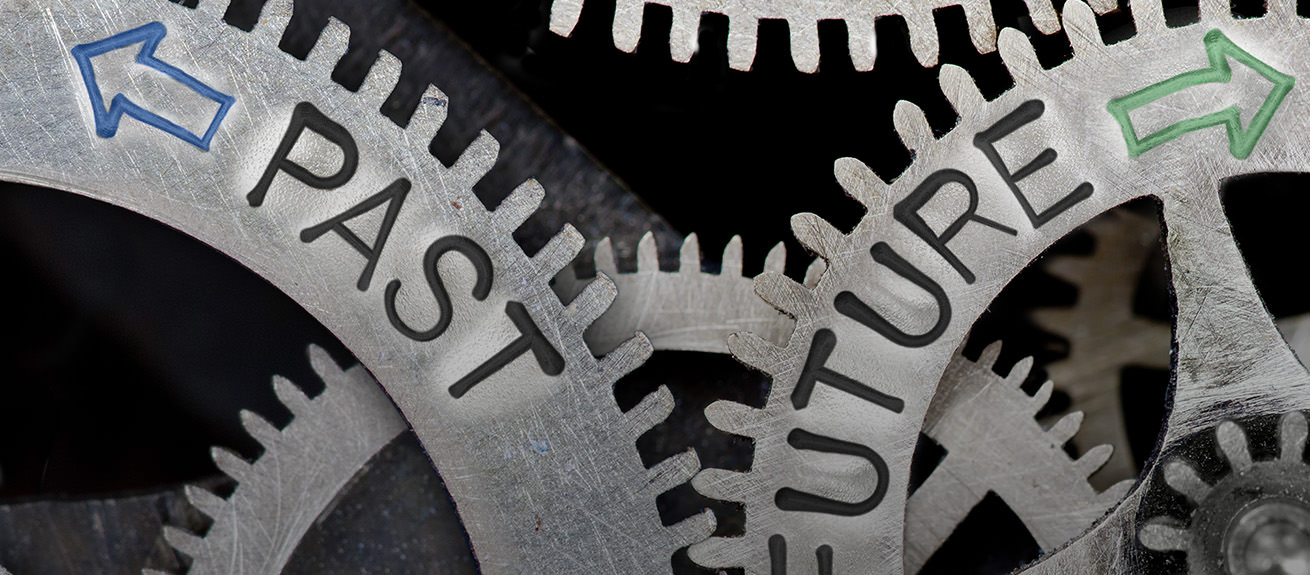What exactly is a transformation journey, and how could it benefit your organization and your people? Chief human resources officers found out for themselves at IMD’s first-ever roundtable for CHROs, where they had the opportunity to share, learn and reflect on different types of transformation journeys.
What is transformation?
Jean-François Manzoni, president of IMD, opened the summit by building a common understanding with participants of what “transformation” means for organizations as they face the disruptive challenges of today and tomorrow. The stakes are high and the pace is intense. A key characteristic of transformation, therefore, is the magnitude of change in terms of both depth and breadth. Transformation leads to a different state of being for a company. The metaphor of a caterpillar becoming a butterfly encapsulates a transformation process.
However, transformation is not an event. It is a journey that is designed to achieve high impact at two levels – individual and organizational. Transformation journeys start with a critical question or challenge. For example, how do we fundamentally rethink our business, how do we compete more effectively in a different playing field, how do we become more agile …?
For such questions, there is no right answer. It is about the ability to have dialogues, explore options (often extreme) and frame choices that are sophisticated, breakthrough and innovative enough to create organizational impact at scale. When companies are guided to find and build their own way forward, there is not only immense learning for individuals but also much higher traction and commitment to implementation. Adopting a modular transformation process allows for reinforcement, time and again; this deepens the learning, and the knowledge within the organization grows. Furthermore, an experiential intervention challenges leadership behaviors and assumptions. One of the biggest problems executives have is a lack of awareness of how they function, why they function in a particular way, and the consequences for others.
Transformation is not an event. It is a journey that is designed to achieve high impact at two levels – individual and organizational.
Why transform?
“Why” is the most fundamental question in a transformation. Albrecht Enders explained that transformation deals with the idea of discontinuous change – which creates threats for the business but also opens up a host of opportunities. Today, the two most critical questions for companies are: (1) how do we manage the core business for growth, and (2) how do we create viable future businesses and build the required capabilities to do so?
Whereas market leaders exhibit incumbent inertia, disruptive players move quickly with a completely different mindset, offer new types of customer value and capture revenue in diverse ways. For incumbents, many factors that create efficiency in running the day-to-day business and a successful culture in a stable environment are the most detrimental during disruptive market shifts. Needless to say, they find themselves at a “fork in the road,” and they have to make difficult choices and trade-offs, especially while protecting the time and resources for the core business.
The drive for transformation stems from a combination of the personal drive of the leadership, the organizational desire and the environmental opportunity. In most cases, the transformation journey is led by a new CEO, but there could be two other trigger points: (1) from the board when the total shareholder return starts to drop and a turnaround is essential, and (2) when value recovery becomes crucial after a company has been operating in cost optimization mode for a long time. Organizations tend to be reactive, working harder and harder and becoming exhausted. Instead, they need to be proactive and get ahead of the challenges and opportunities in volatile times.
When new technologies emerge, companies have a lot of options but there is little certainty about what is going to unfold. By the time the certainty increases, not many options are left. This is the dilemma that companies face. It is possible to set up a systematic mechanism to force a conversation and make decisions.
How to drive a significant transformation journey
The transformation journeys of several large multinational companies across industries – Neste, Mars Petcare, Loomis, Stora Enso, GroupM, Hempel, Orkla, Tetra Pak and DBS bank – were shared during the summit. The insights from the nine-year transformation journey of Finland-based Neste, a traditional oil refiner, resonated with participants.
When the new CEO Matti Lievonen joined Neste in 2008, the oil price was $140 per barrel and the share price was €55. One year later, the oil price was $35 per barrel and the share price had dropped to €8. At this point, the company decided to invest €2 billion in renewables – a business that the people on the ground did not believe in. Their initial reaction was that this move would destroy the company.
Neste leveraged its technological capability and 1,500 R&D engineers to execute its strategy of transforming from a small player among the oil majors to the world’s largest producer of renewable diesel refined from waste and residues. About 140 people, including handpicked talents and future change agents, joined an IMD intervention that ran over one year. They set out to understand the market drivers, define the must-win battles for value creation and build the agenda and shared ownership for strategy implementation. Neste’s transformation received strong board support from Day One and throughout the strategic shift, despite a strong hit to the immediate financial results. By 2016, renewables contributed about half of Neste’s profits. Matti Lievonen shared some of the key steps:
“Before challenging the entire strategy and business model, we had to create the base. We made some big changes in senior management, introduced a comprehensive cost leadership program and saved €1 billion working capital in the first six months. The new management team comprised some people who were promoted and others recruited from outside. About 50% of people across levels changed their position through job rotation. I interviewed 120 people and listened to their point of view. At the same time, I set very transparent expectations on behavior. This was important as the company had to make a huge and hard operational turnaround that involved making 10% people redundant (some people left of their own accord). You have to be honest and tell the truth, even if it is harsh.”
Today, Neste’s journey has not ended; it continues into the next phase of creating value in new and innovative ways.
Anand Narasimhan shared a framework for transformation built around the catalyst, the quest and capabilities. The catalyst for any transformation is value creation, the quest is the singular focus that a company has on undertaking a transformation, and the capabilities enable successful implementation.
He illustrated this with the case of GroupM India, the largest media buying company in the country, which exhibited impressive growth in the decade up to 2013. Although GroupM was strong in traditional media (TV and print), a fundamental shift was occurring in the marketplace – mobile phones were expected to overtake television as the first screen over the next five years. The company realized that it was lagging in the digital media space where competition from small start-ups was intensifying. Moreover, brands had started trying to reach customers directly through Facebook, Twitter, Instagram, and the like. GroupM understood that digital would likely create a bigger pie rather than cannibalize its traditional advertising business. Its game-changing quest was to build digital media as a new area for growth.
The company embarked on a three-year transformation journey that focused on changing its portfolio, building talent and organization capabilities for digital, and developing partnerships for innovation (e.g. a partnership with Google for training/certification, creating new properties and the like). GroupM also created a parallel structure to the executive committee called the Youth Committee (YCO), comprising high potentials under 30, to understand the reality on the ground and connect with the young generation of employees. GroupM thus transitioned at the right time to understand that data, analytics, social listening and digital media were key to the sustained success of the company.
Finding the path by looking outside-in and future-back
Tom Malnight shared the examples of Mars Petcare and Loomis to illustrate transformation journeys that involved a fundamental change in the strategy (playing field, value proposition and innovation), organization (structure and roles) and leadership (composition and agenda).
In 2014 Mars Petcare, a successful $12 billion company, was the largest pet food and veterinary business in the US and was growing at 4-5%. Mars Petcare’s journey began with the Pathfinder program, which involved 20 talents who were told to assume that they had been fired. This was to change their mindset from problem-solving mode to learning mode.
The pathfinders visited 28 companies (none in the pet business) that had grown at about 30% CAGR for the last five years. These learning expeditions focused on four strategic lenses. At the company’s leadership summit for the top 150 people, the pathfinders shared their perspectives, challenging the company’s current reality and outlining why a successful organization should undertake transformation.
The transformation path for Mars Petcare was to move beyond pet food to pet care and even further to create a better world for pets – the corporate purpose of the company today. The new purpose opened up a realm of opportunities and completely changed the company’s strategic agenda in terms of redefining the pet ecosystem, launching new growth businesses, value propositions, innovations, M&As, collaborations, and so on.
Mars Petcare never walked away from being a leader in pet food. It expanded from retail pet food to specialty food and then into pet wellbeing by connecting diagnostics from veterinary hospitals with therapeutic foods. Today, the company is leveraging technology, data and analytics to build connected solutions to address pet owners’ pain points and support their customer journey. For example, it acquired a technology company that built a “fitbit” for dogs to track their activity; the data can be transmitted to the vet, who recommends the right food. According to company president Poul Weihrauch, it is not the portfolio of businesses but the connections between the businesses that create value as “multipliers” of the individual businesses, i.e. the whole is greater than the sum of its parts. He stated:
“There are three ingredients to a good life – food, healthcare and exercise. That was the reason behind changing the playing field from food to health to total petcare and leapfrog the competition. Key to this was our purpose. We needed to create a better world for pets because pets create a better world for us – this was backed by a significant amount of research on the role of pets in our lives.”
The pathfinders were the architects of Mars Petcare’s path, which they co-created with the leadership team to launch the company onto a new growth trajectory.
Stockholm-based Loomis provides cash handling services to banks and retailers in 20 countries worldwide. Traditionally, Loomis had been very successful by following a decentralized operating model along with a margin growth strategy. However, this strategy was reaching its limits in 2016, when new CEO Patrik Andersson came on board.
The question was how to transform an “old” business that involved physically transporting cash and to make a leap in value creation. Loomis’s nine-month transformation journey started with listening across levels and geographies, about what was working/not working in the organization and about the future challenges and opportunities. Then, at a three-day IMD workshop, the leaders collectively explored options and shaped choices, as a team.
Over the next three months a wider group refined and built on the choices, creating buy-in from within. The leadership team decided on three key moves: (1) to go from a margin growth strategy to a revenue growth strategy by changing the business activity mix and business model; (2) to go beyond cash handling to managing the rapidly evolving cash ecosystem by tapping into emerging opportunities around banking, retail and payments; and (3) to go from functioning as three decentralized regions to operating as one unified company.
When Loomis presented this new strategy to the market in September 2017, its stock price increased by 4.2% that day – a direct consequence of effectively articulating the path going forward. Since then the stock price has continued to rise.
Most of the unique, good ideas come from inside the organization, not from consultants. The issue is that there is no opportunity, space and time to give voice to the people to share, listen, explore and learn.
Building the path through engagement and execution
Stora Enso, which started as a mining business, transformed several times to become the world’s largest paper company during the 2000s. That was when electronic media disrupted the paper industry. By 2007 the organization was struggling for its very survival and a new CEO, Jouko Karvinen, was brought on board. Between 2007 and 2010, about 11,000 people out of 30,000 were laid off as part of an effort to cut costs and restore profitability.
Against this backdrop, Stora Enso transformed from a Nordic European paper, packaging and wood products company to a global renewable materials company. It made a strategic decision to generate as much cash as possible from the paper business and use it to invest in the growth opportunities related to global trends. Where mills were not profitable, capacity was reduced or the asset was sold to fund the new growth businesses.
Over a six-year period, the shift from fighting for survival to playing to win was brought about through intense focus on leadership, people engagement, building capabilities around innovation and changing the organizational culture to be in sync with the new strategy. One of the cornerstones of Stora Enso’s turnaround was the Pathbuilder program.
Stora Enso decided to ask the organization for help. It posted an advertisement – any employee interested in driving the transformation process together with the executive team could apply. The advertisement was seen as a sign of trust (especially during difficult times) and an opportunity to have an impact on the company’s future. The selected group of people – the pathbuilders – ranged from experienced VPs to new employees with diverse functional backgrounds. They worked on four to five mission-critical challenges faced by the top team.
An outside-in perspective was introduced by learning from other organizations that could share important insights into matters central to Stora Enso’s strategy. In addition, the pathbuilders learned skills in areas such as strategy, structured thinking, innovation, digital and, equally importantly, leadership.
By the time the pathbuilders presented to the top team, they had also developed significant capabilities around problem solving, engagement and communication. The CEO and top team remained involved throughout the process and experienced the learning together with the pathbuilder project teams.
Stora Enso became a customer centric and purpose-driven company that aimed to do good for people and the planet by replacing fossil-based materials with renewable solutions. Contrast this with the original perceived purpose – to achieve a return on capital employed of 13% in order to survive. The company’s share price has tripled since 2011, with 67% of sales coming from the growth businesses.
Pau Garcia-Milà, co-founder of Ideafoster, highlighted the importance of accelerating innovation for traditional companies as they are pitched against disruptive start-ups. The start-up world comprises thousands of companies that separately have no power but together (even without collaborating) are a force to be reckoned with, as they can each take a few customers away and collectively capture significant market share.
He brought speed of innovation to life when his remote six-member team built a website prototype based on a participant’s idea in 45 minutes. His provocative question to participants: What is your time to prototype (TTP)? Can you reduce it by 98%? The goal of the prototype is not to be a real product but to gauge traction for the product. Companies that implement fast generally follow three guidelines: better ideation, ask the right questions, and drive with passion.
According to Goutam Challagalla, the winners in the digital battlefield will be decided by one question – can traditional companies pivot to software, artificial intelligence (AI) and the information space faster than tech start-ups learn the incumbents’ traditional business? This battle started much earlier in B2C but is now intensifying in B2B. The profit pools are likely to shift to the party that controls the intelligence.
He also shared the case of DBS Bank of Singapore. In 2013 DBS saw the rise of the fintechs and realized that disruption in banking would come faster to Asia than in the West. The bank’s customer-centric digital transformation focused on process improvement, with the metric for measurement being the number of customer hours saved. In 2016, DBS was named the world’s best digital bank by Euromoney. Its next goal was to make banking invisible.
Would you want to board an aircraft developed by a company that has a culture of launch early, fail fast and learn quickly? How do we marry the search for perfection in a product with the speed of innovation before it comes on stream?
Accelerating implementation through capability building
Bettina Büchel reiterated that context is paramount in designing and implementing a transformation journey. Given that each company is unique and at different starting points, an assessment of the situation depends on two dimensions: top management’s clarity on the strategy and the organization’s readiness for change. She described three examples.
In 2014, Hempel – a leading protective coatings supplier – was growing at 2-3% and there was a medium level of urgency for change, driven by stagnation and consolidation in the industry. A CEO transition was expected, which meant that the employees were in waiting mode.
Hempel’s transformation journey was created by involving the broader organization in surfacing bottom-up views (from regions and business units) on opportunities for future growth. Senior management evaluated the ideas and then identified business growth streams, prioritized options and secured buy-in for implementation. As the next step, the leadership team convened at the IMD Summer School where they were exposed to academic content and examples from other industries. This prepared the ground for decision making on the strategy plan and desired critical capabilities (e.g. global key account management, value selling, technical services) for taking Hempel forward. The final output was the company’s Vision 2020 and its strategy.
In the case of Tetra Pak – the world’s leading processing and packaging solutions company for food – the senior management had clarity on strategic priorities but there was some misalignment on how to execute on them. The goal for 2016 was to continue to shift the company from being product-centric to become service focused to compensate for the margin erosion in the product business.
Tetra Pak’s journey began with the top 130 people and was subsequently cascaded down to the next 1,000, supported by video-based learning for the next level. The transformation enhanced the company’s focus on defining the value proposition and improved process focus and new leadership behaviors such as collaboration across the business.
At Orkla – a leading Nordic supplier of branded consumer foods – the company leadership was primarily focused on its many local subsidiaries. As a result, there was limited sharing or synergies across businesses or geographies. In its quest to develop a vision for 2025 and function as “One Orkla,” a 12-month transformation journey was designed in 2015. It included three components – an individual online program, business area specific programs and top leadership forums of 230 people. The emphasis was on changing leadership expectations and behaviors and developing leadership teams to work collaboratively in order to be able to act as “One Orkla,” manage conflict and boost resilience. Success was measured through before and after bottom-up feedback to the leadership team on specific Orkla values.
Key to any transformation journey is understanding not only the starting point but also what capabilities to focus on to make the journey a success.
Reflections and takeaways
Companies’ top management must realize that transformation is not a one-off effort to reach a goal. The end in a transformation journey is never reached. The leadership agenda simply changes to respond to the continual dynamics in the external environment.
There is always pressure from investors to keep improving returns. Hence, a transformation journey must help people see the spectrum of possibilities in defining standards of excellence beyond their traditional landscape – where it is not about being better by just 20%, but by an order of magnitude. This can create an aspiration for transformation and a sense of urgency even for successful companies. The future belongs to companies that can systemically assimilate the perspectives of not only a charismatic CEO but also employees in different parts of the value chain, customers, tech start-ups, and other stakeholders like NGOs or governments.
Silos in an organization exist even at the top management level – in their thinking, behaviors and actions. Like a fractal, this reverberates down through every level of the organization. Thus, companies must consciously work at the top to bridge the silos.
The summit gave the CHROs time to reflect and make sense of where they stand – as an organization, as a team and as individuals – and share their insights. Some common themes that emerged as key success factors for a transformation include:
- Strong purpose: This means having an aim beyond just making money. Although there is a risk that it might be perceived as nice words only, if actions – of senior management in particular – prove otherwise, it will be central to successful change. And once the purpose is anchored, it acts as a powerful tool to attract, motivate and retain people.
- Vision, commitment and authenticity of the CEO.
- Building awareness at the top management level: The more senior people are, the less honest the feedback they receive; they are often prone to significant confirmation bias.
- Strong leadership and persistence in dealing with difficult situations/discussions/derailers.
- Engagement and buy-in at all levels; without it, the entire process can go off track.
- A different perspective in looking at costs versus potential gains.
- Setting priorities: Dive deep and come back up again to simplify the goals and priorities. The management time that needs to be spent on this activity is often underestimated. Limiting the number of strategic priorities forces tough trade-offs.
- Link strategic priorities to the critical capabilities and identify the gaps.
- Diversity in the board and the executive management team: This is an essential element for bringing outside-in perspectives for rethinking the strategy. Is the top team dominated by functional heads who are focused on executing the core business or are there strong diverse perspectives from those who are looking at future options?
Today, the role of the CHRO in a transformation context is becoming increasingly important, but also complex. Although the CEO ultimately owns the transformation, the role of the CHRO is key. As evidenced by the examples above, purpose, leadership, engagement and above all capabilities are critical for successful transformations. And all these are areas in which it is fair to expect the CHRO to take the lead, while also contributing elsewhere, as any member of the executive team should. Wearing multiple hats as an owner, a facilitator, orchestrator, communicator and supporter of the transformation, the CHRO needs to work closely with the functions and businesses. Considering this, the role of the CHRO has never been more challenging or more influential and exciting.










